Experience Telemetry by CX: Data Model Specification
Available Languages
Bias-Free Language
The documentation set for this product strives to use bias-free language. For the purposes of this documentation set, bias-free is defined as language that does not imply discrimination based on age, disability, gender, racial identity, ethnic identity, sexual orientation, socioeconomic status, and intersectionality. Exceptions may be present in the documentation due to language that is hardcoded in the user interfaces of the product software, language used based on RFP documentation, or language that is used by a referenced third-party product. Learn more about how Cisco is using Inclusive Language.
Contents
Increasingly Customer Experience (CX) is seen as the key brand differentiator over product and price in the competitive marketplace.
Cisco’s goal is to make our customers successful with Cisco products and services, whether delivered by Cisco or our partners.
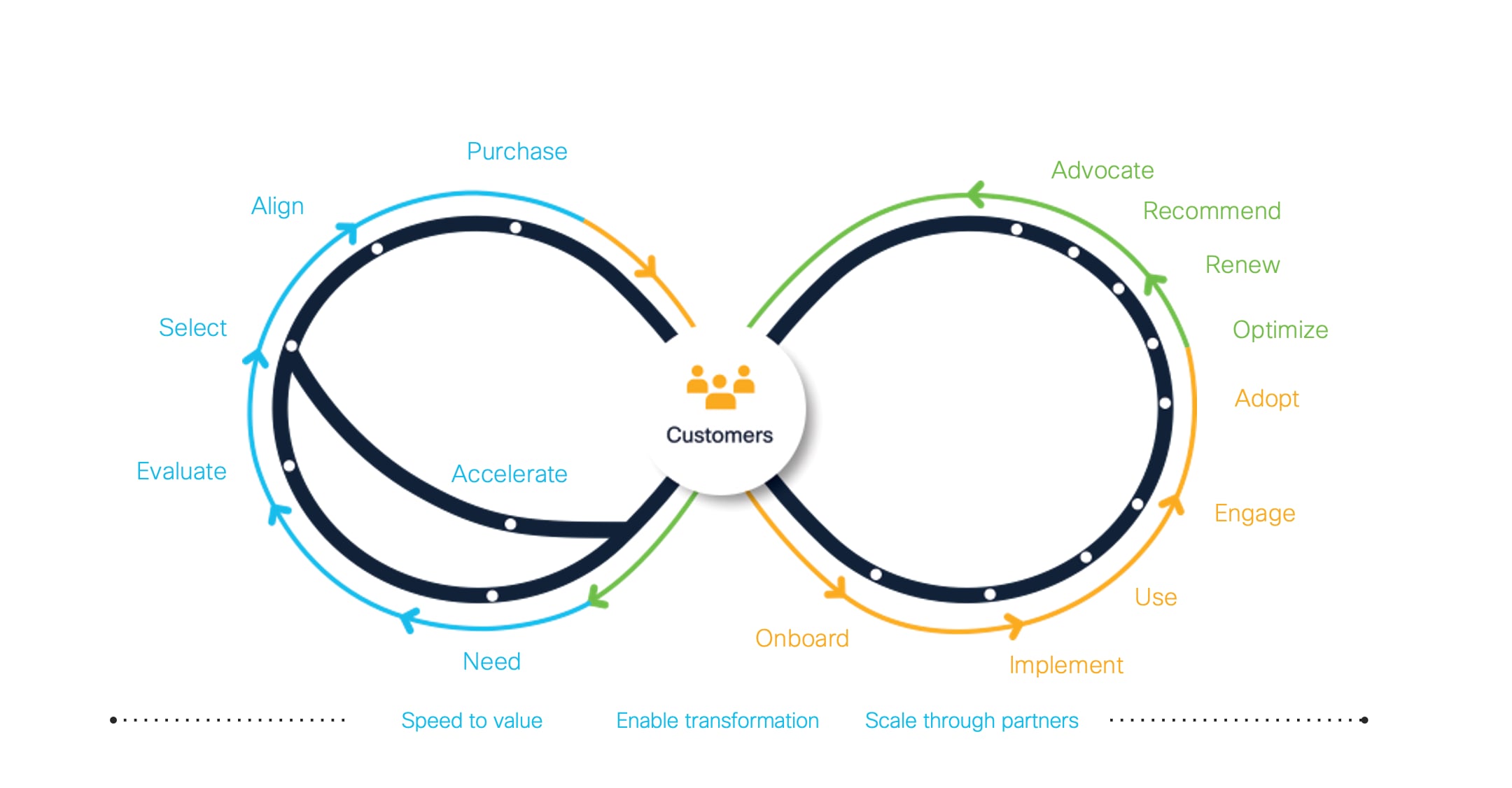 The CX Lifecycle is how we view our customers’ experience with our technologies, and its purpose is to continuously advance our customers towards achieving their goals at every stage of the journey. With secure insights we can help our customers and partners turn their technology investments into business value faster.
The CX Lifecycle is how we view our customers’ experience with our technologies, and its purpose is to continuously advance our customers towards achieving their goals at every stage of the journey. With secure insights we can help our customers and partners turn their technology investments into business value faster.
Cisco CX uses Telemetry to measure adoption and use of software and hardware products to power customer success across the technology lifecycle. By providing technology and intelligence with proactive insights and guided recommendations, customers can solve problems faster and optimize operations – from viewing the health of the infrastructure and potential issues - to automating case opening when faults are detected.
Telemetry is defined as the in situ collection of measurements or other data at remote points and their automatic transmission to receiving equipment for monitoring. The word is derived from the Greek roots tele, "remote", and metron, "measure".
Cisco today understands telemetry as the process of instrumenting network elements, both hardware and software, collecting near real-time information using a set of automated communication and secure transport processes, and storing so it is ready for use by consuming business applications. Telemetry delivers capabilities such as the identifying a product, how it is being used, what are the top features, and enabling configuring changes or upgrading software.
Historically, telemetry has been associated optimizing IT operations with data and analytics. Telemetry is also applied to understanding customer experience, as used by many cloud and Software as a Service (SaaS) providers, and can be extended to all type of products, solutions and consumption models.
Within Cisco CX there are two primary high-level use-case types associated with telemetry data:
● Managed Services and Support
● Product Adoption and Customer Value
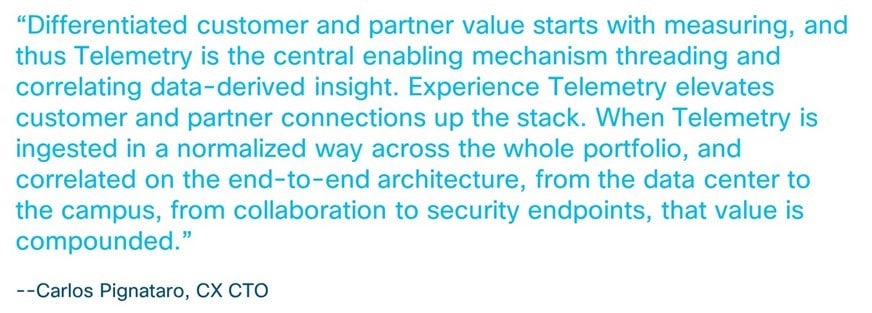
Use cases relating to managed services and support, for engineering or operations roles, are the traditional consumers of Operational telemetry. (Most network operators know Operational Telemetry as simply Telemetry). Benefits include proactively or predictively identifying product behavior and functions that could result in a service degradation or outage, plus real-time information enabling rapid and effective recovery of services after an incident.
For customers and service providers assuring the availability, performance, continuity and security of a business service or application, methods or protocols like Model Driven Telemetry (MDT), Simple Network Management Protocol (SNMP) or system messages (syslog) enable:
● Element Monitoring - event management, anomaly detection
● Configuration Management - hardware, software, feature, topology
● Troubleshooting – problem solving
● Intent Based Control – dynamic enforcement of business policies
Use cases relating to solution adoption and value, for business development or technology management roles, are the new consumers of Experience Telemetry. Benefits include identifying if customers are successfully using Cisco Products they have purchased or subscribed to.
For customers and product or solution providers ensuring the adoption and business value of technology, technologies like embedded agents enable:
● Asset Identification - unique products or soultions
● License – perpetual or subscription status
● Usage – features or capabilites activated and adopted
Best practices that apply to Operational Telemetry also apply to Experience Telemetry, such as the importance of standardizing data models.
There are many questions consumers and providers have in common when understanding their technology investments in network environments that Experience Telemetry can help answer:
| Technology Consumers |
Product or Solution Providers |
|
● What features and functionality am I consuming in my environment?
● Do I have best practices enabled and configured?
● How do I compare to peer organizations in my sector or vertical?
● Have I under or over purchased my licenses, optimizing my costs or in compliance to the contract?
● Do I have the right license type or service levels to maximize the effectiveness of my users?
● Do I have the solution completely enabled completely or do I have devices, users or areas that should be provisioned but are not?
● Are users, roles and groups using the product as planned?
● When I need help or support, does my product or solution provider have contextual information to rapidly engage with me to resolve the issue?
|
● Are my customers at a standstill in their adoption and usage of a solution or product?
● How can I provide them proactive help, insights learning to realize full value of their purchase?
● What areas should I invest in based on demand for a feature?
● Should I simplify, re-invent or deactivate products or features that are not being used?
● What product type, license type and feature combinations are my customer using most often and how can I improve their experience?
● Are there known risks my customer may be exposed to that I can advise them on or help remediate, such as security advisories, bugs, end of support milestones, or software compliance?
● Are there alternative products or solutions that may better meet business requirements?
● Do I know which customer owns which assets?
|
Product adoption is key customer experience metric to help technology managers and solution providers understand if they are realizing the full value of their technology investment.
CX Cloud leverages a combination of asset, license and product usage Experience Telemetry as the basis for analyzing the Customer and Partner Experience and driving successful adoption. Examples of this in action are illustrated below.
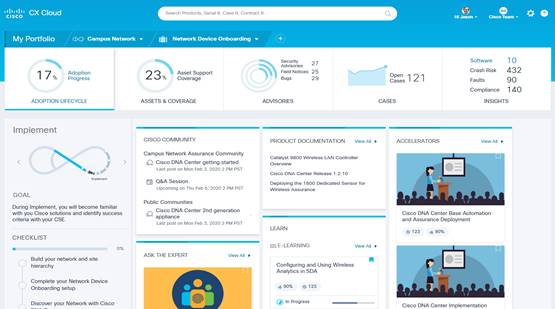
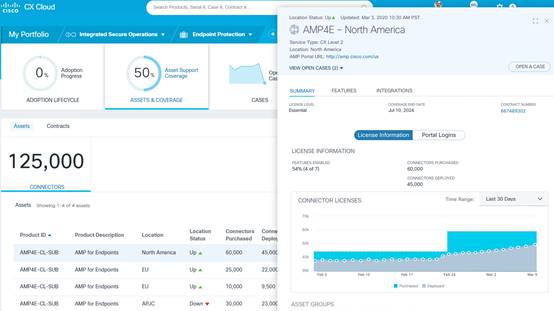
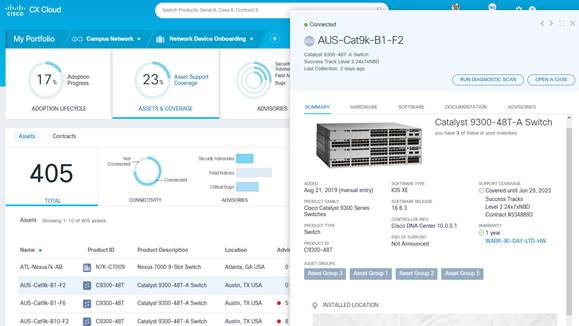
Recognizing that Experience Telemetry is foundational for customer success and modern product development, Cisco sees the need to include Experience Telemetry on an open and structured data model.
The data model will support cross domain network technologies, hardware and software products, applications; on premises, hybrid and cloud deployments models, and asset ownership or as-a-service consumption. At the same time, defining a common data model implies additional components that will need to be aligned to build a highly resilient and scalable cloud solution, including:
● Collection mechanism - adapters, data manifest
● API - data bus transport
● Analytics threading/enrichment system
● Dashboard - integrated product or cross architecture
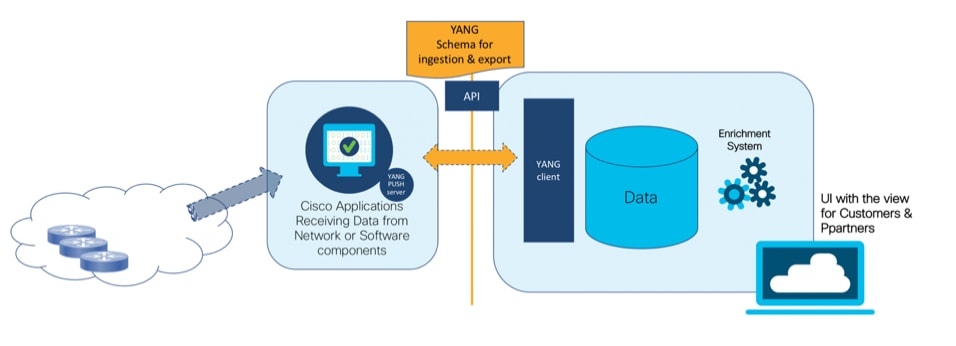
A common data model specification will drive consistency across all Cisco products and solutions to support measurement and reporting of Experience Telemetry for the benefit of all customers, and will better connect the value of technology investments to achievement of business outcomes.
We expect customers will drive demand for the industry to continue simplifying the management of multi-vendor solutions, so there is also an opportunity for to use standards to work across product vendors, partners, solution providers and system integrators to specify a common data model and API for Experience Telemetry.
A standard data model and API will allow a customer or network operator to have a single system collecting the Experience Telemetry from all assets, and enable processing and storing all telemetry data received from different vendors in a single system.
Experience Telemetry Modelling
Given our goal of using telemetry to understand and optimize the whole user experience, we necessarily need to represent telemetry data in a form that enables analysis across the whole of the IT operations.
This is a challenge because different parts of the IT domain are modelled in different ways using a wide variety of modelling languages, tools and techniques in different standards settings bodies. For our goal to be achievable we have to make a choice based on which modelling language is going to be prevalent for our purposes, which parts of the domain have most impact, and which information models are most useful.
Our perspective is that network connectivity has a very significant impact on service implementation and end user experience. This view is based on decades of experience in identifying and resolving IT issues, so is well founded in practice. We recognize that network connectivity is not the totality of the problem space, but it is a large enough part of the problem space to be a good foundation to start from and set the stage for more efficient integration of telemetry data across domains in future.
YANG Modelling Language
With this perspective and reasoning, we have chosen YANG for Experience Telemetry:
YANG is widely adopted as a data modelling language for network device telemetry and configuration and is suitable for defining telemetry data models for other IT domains.
YANG Is widely adopted in the networking industry, so the understanding and skills required to use YANG are widespread in the intended IT systems development and operations audience.
YANG base data concepts are applicable across IT domains, so are a good foundation for modelling the intersections between the network domain and other IT domains, such as compute, storage, and applications.
YANG is a well-defined and extensible modelling language, with the expressive capacity to provide structure and rigor to model any data.
YANG is text based, and so readable by humans, whilst also well supported by open-source tools that can easily translate YANG models to other languages, and to implementation artefacts for a wide variety of purposes.
In summary, YANG is suitable for the job at hand, covers much of the problem domain, is already familiar to many of the intended audience, and has a very low cost of adoption with a wide range of open-source tools.
We provide examples of how we are using YANG below.
Experience Telemetry Data Model
Building an Information Model helps to visualize the data sets, whilst building a Data Model from that Information Model makes it consumable by implementors for a wide range telemetry types. The Information Model below illustrates the structure of the corresponding Data Model that we have also defined in YANG.
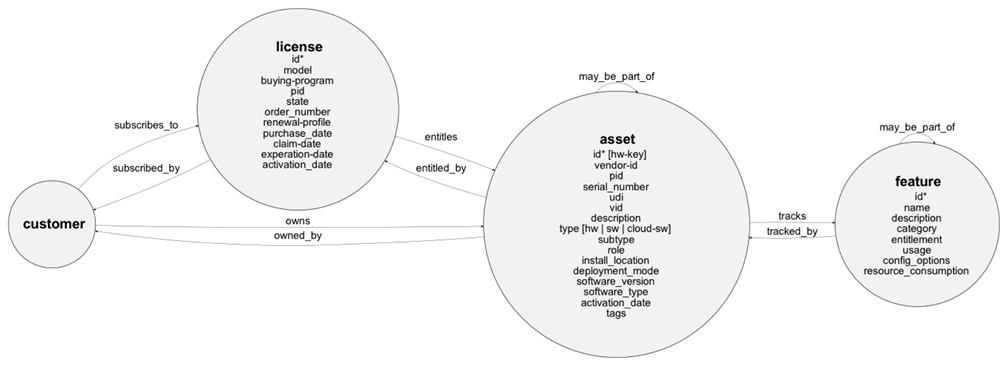
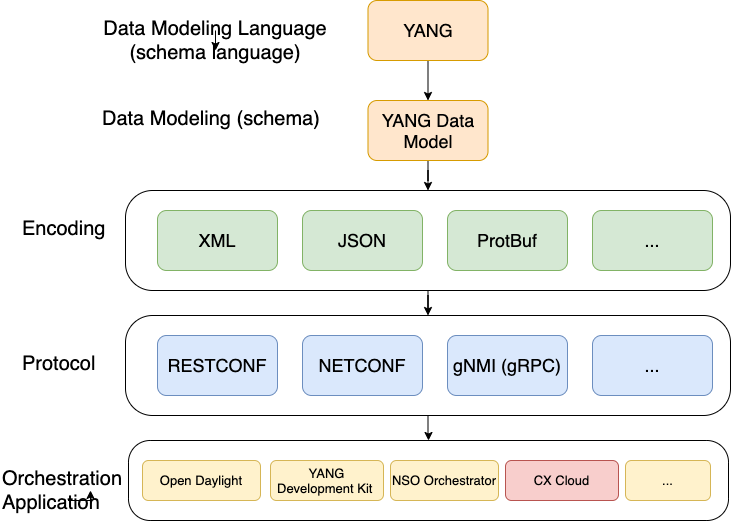
YANG Data Models can independently use different encoding and transport protocol mechanisms, and can be easily adopted by APIs in order to be consumed by different applications. This is illustrated in Figure 6, which shows how YANG can be serialized in XML, JSON, protobuf and transported over gRPC or REST interfaces. While YANG is often used with IETF protocols (NETCONF or RESTCONF) in a network environment, it can also represent software assets and concepts.
With such a range of implementation possibilities, almost any application will be able to consume the Experience Telemetry data.
References
Authors:
Marisol Palmero Amador, Technical Leader, CX CTO, Cisco
Yenu Gobena, Distinguished Engineer, CX CTO, Cisco
Erik Vyncke, Distinguished Engineer, Emerging Technologies & Incubation, Cisco
Contributors:
Martin Beverley, Principal Architect, CX CTO, Cisco
Josh Suhr, Principal Architect, CX Product Management, Cisco
Nathan Sowatskey, Principal Architect, CX CTO, Cisco
References:
● Cisco Trust Center – on how Cisco handles critical customer data, especially Systems Information https://www.cisco.com/c/en/us/about/trust-center/systems-information.html
● Telemetry, Model-driven Telemetry, Operational Telemetry, Business Telemetry, You-name-it Telemetry https://www.claise.be/telemetry-model-driven-telemetry-operational- telemetry-business-telemetry-you-name-it-telemetry/
● CX Cloud – application of experience telemetry https://www.cisco.com/ c/m/en_us/customer-experience/cx-cloud.html
● CX Glossary - https://www.cisco.com/c/dam/en/us/products/se/2019/11/Services/cx- glossary.pdf